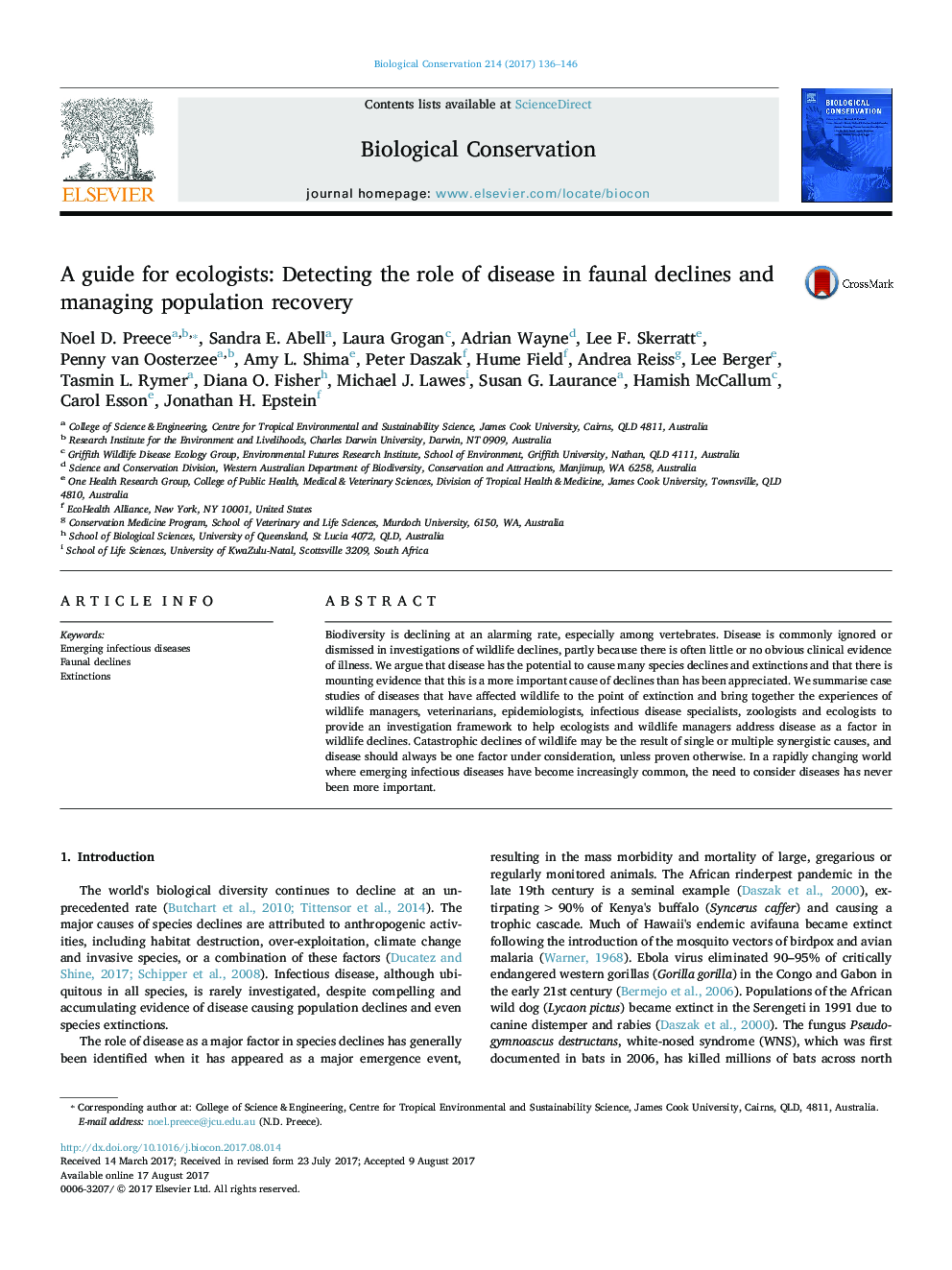| Article ID | Journal | Published Year | Pages | File Type |
|---|---|---|---|---|
| 5742926 | Biological Conservation | 2017 | 11 Pages |
â¢Diseases have caused declines and extinctions of fauna worldwide.â¢Emerging infectious diseases increase concerns of further detrimental effects on fauna.â¢Ecological studies into causes of declines often ignore disease as a factor.â¢We propose a disease investigation framework to assist in detecting disease in wildlife.
Biodiversity is declining at an alarming rate, especially among vertebrates. Disease is commonly ignored or dismissed in investigations of wildlife declines, partly because there is often little or no obvious clinical evidence of illness. We argue that disease has the potential to cause many species declines and extinctions and that there is mounting evidence that this is a more important cause of declines than has been appreciated. We summarise case studies of diseases that have affected wildlife to the point of extinction and bring together the experiences of wildlife managers, veterinarians, epidemiologists, infectious disease specialists, zoologists and ecologists to provide an investigation framework to help ecologists and wildlife managers address disease as a factor in wildlife declines. Catastrophic declines of wildlife may be the result of single or multiple synergistic causes, and disease should always be one factor under consideration, unless proven otherwise. In a rapidly changing world where emerging infectious diseases have become increasingly common, the need to consider diseases has never been more important.
